User Login/Registration and Guest Posts
User Login/Registration Settings
Guest users are redirected to the default WordPress login page when they try to submit listings from the frontend (unless guest posting is enabled, see Guest Post Settings). However, the design and layout of the default WordPress login page does not match your current theme which may be confusing to some visitors.
This is when you can enable the custom login/registration form feature. When enabled, login and registration forms are displayed on a standard WordPress page using the layout of your WordPress theme.
Below is an example of how the login/registration page looks like when the feature is enabled:
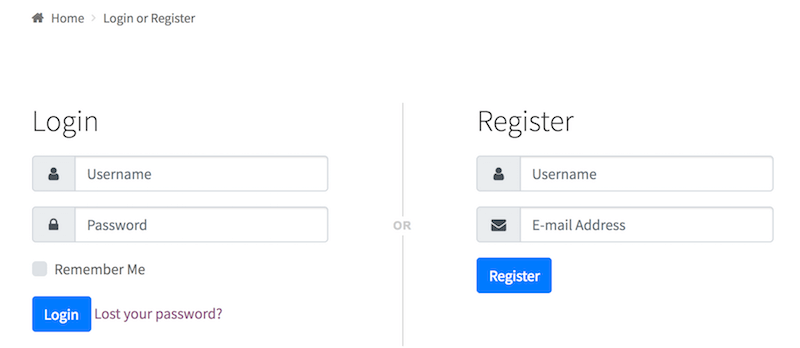
Follow the steps below to enable and configure custom user login/registration forms:
Login to your website if not yet logged in and go to the WordPress administration dashboard.
Click Directories in the admin sidebar.
Click the Settings tab and then the Frontend Submit sub-tab and scroll down to the section labelled User Login Settings:
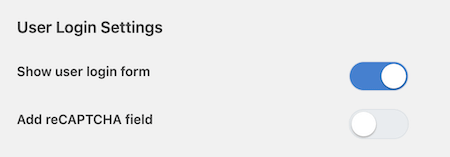
Show user login form - Whether or not to show a custom login form to guest users.
Show lost password link - Whether or not to show a link to lost password page in the login form.
Customize lost password e-mail - Switch this setting on if you wish to customize the subject and body of the lost password email sent to users.
Add reCAPTCHA field - Whether or not to add a CAPTCHA field to the login and form for spam prevention. For more details on reCAPTCHA, see Preventing Spam with reCAPTCHA.
Here is how the forms look like when the reCAPTCHA field is enabled:
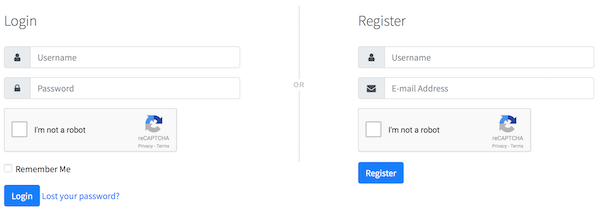
Scroll down to the section labelled User Registration Settings:
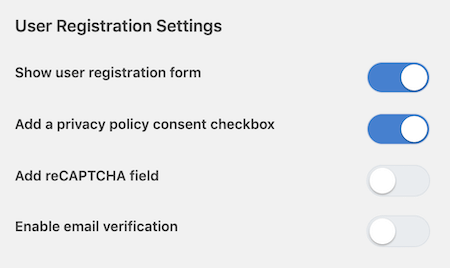
Show user registration form - Whether or not to show a custom registration form to guest users.
Note: Make sure user registration is enabled in WordPress (Settings -> General -> Membership), otherwise the registration form will not display even when Yes is selected for this option.
Add a privacy policy consent checkbox - Whether or not to show a checkbox for privacy policy consent required to check in order to submit the registration form.
Add reCAPTCHA field - Whether or not to add a CAPTCHA field to the registration form for spam prevention. For more details on reCAPTCHA, see Preventing Spam with reCAPTCHA.
Enable e-mail verification - Whether or not to require newly registered users to verify their account by sending a verification email. For more details on this feature, see Email verification.
Scroll down the page and press Save Changes.
In addition, make sure that a valid WordPress page is assigned as the page for displaying the login and registration forms.
Click the Pages sub-tab and scroll down to Page Settings.
Make sure a valid page is selected for Login/Registration.

Scroll down the page and press Save Changes.
Email verification
The email verification feature lets you moderate newly registered user accounts by sending a verification email to the email address used during user registration. Users that received a verification email are then required to click on the user verification link in the email to verify their account before they can login.
Administrators can view verified/unverified user accounts on the Users page in the backend, as well as manually verify/un-verify accounts and/or resend a verification email.

You can also use the filter above the list of users to show verified or unverified users only.
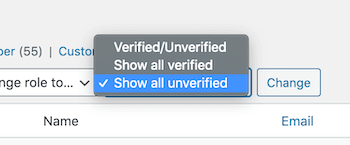
In order to enable the email verification feature, switch on the Enable verification setting under the User Registration Settings section (Directories -> Settings -> FrontendSubmit -> User Registration Settings). You will then see the following additional settings appear.
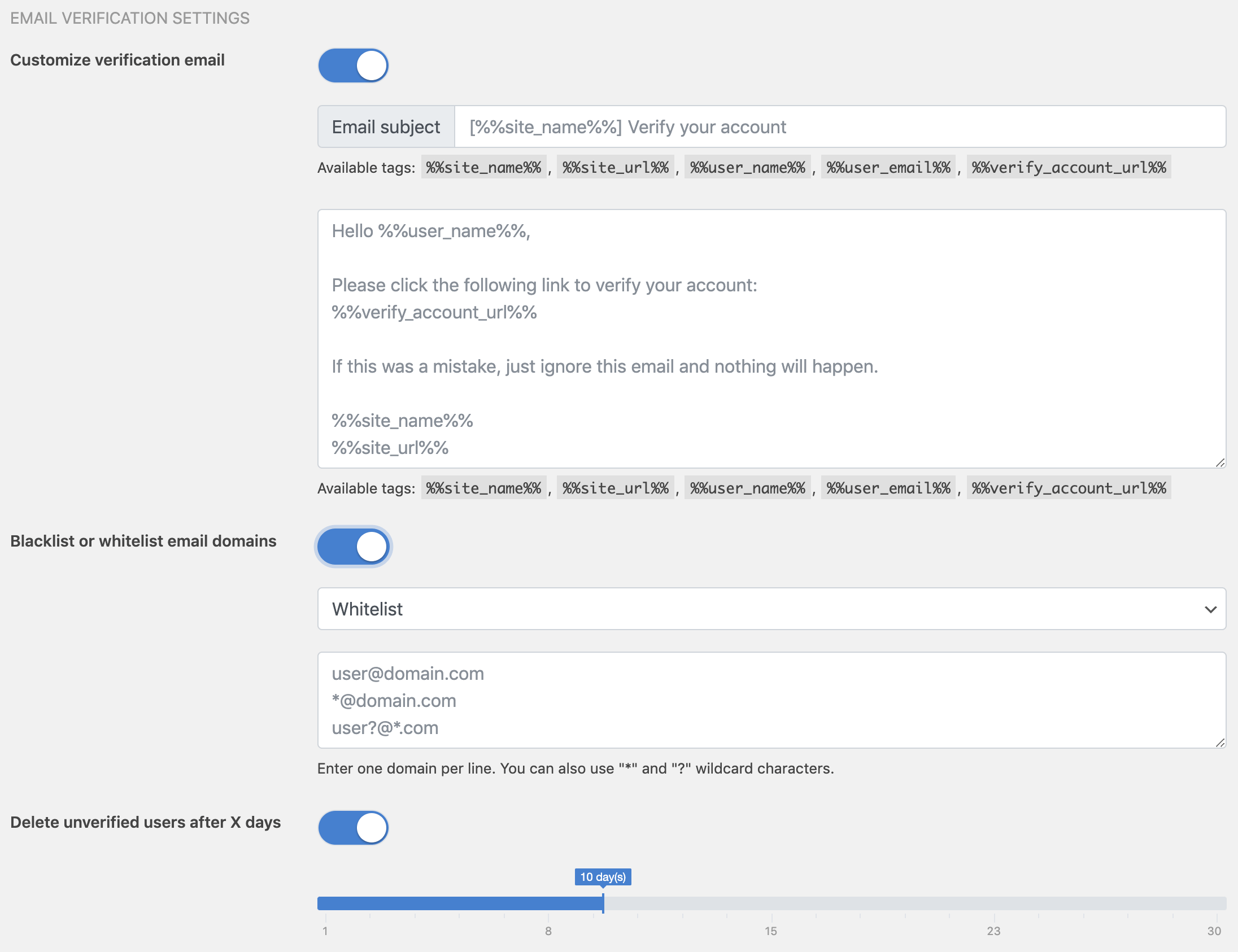
Customize verification email - Switch this setting on if you wish to customize the subject and body of the verification email sent to users.
Blacklist or whitelist email domains - Whether or not to blacklist/whitelist email addresses used during user registration. If Blacklist is selected, only the email addresses that matched one of the entries in the list will require email verification. If Whitelist is selected, email addresses that matched one of the entries in the list will NOT require email verification.
Delete unverified users after X days - Whether or not to delete accounts that are still unverified X days after user registration. Switch this setting on and select the number of days user accounts can remain unverified (default: 30 days).
Disable custom login/registration form feature
In case you need to disable the custom login/registration form feature of Directories Pro, simply unselect the currently selected option for the Login/Registration setting under Page Settings (Directories -> Settings -> Pages).
Or if you are currently not logged in and for some reason unable to login through the custom login form, you can add the following line of code to functions.php of your theme to force disable the custom login feature:
add_filter('drts_frontendsubmit_login_disable', '__return_true');
Guest Post Settings
In Directories Pro, you can let visitors submit listings/reviews to your directory without login or registration by granting the Create Listings permission to the Guest user role (see Permissions for details).
Guest users are by default required to enter their name and e-mail address when posting. There are additional options such as requiring them to enter a website URL and un-requiring the e-mail address field. In order to configure what data should or should not be collected from guest users, follow these steps:
Login to your website if not yet logged in and go to the WordPress administration dashboard.
Click Directories in the admin sidebar.
Click the Settings tab and then the Frontend Submit sub-tab and scroll down to the section labelled Guest Post Settings:
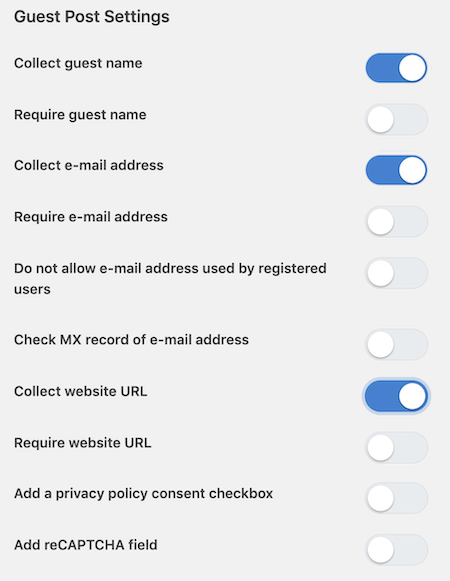
Collect guest name - Whether or not to show an e-mail address field.
Require guest name - Whether or not to require an e-mail address to be entered.
Collect e-mail address - Whether or not to show an e-mail address field.
Require e-mail address - Whether or not to require an e-mail address to be entered.
Do not allow e-mail address used by registered users - Whether or not to prevent from entering an e-mail address that is associated with an existing user account.
Check MX record of e-mail address - Whether or not to make sure a valid MX record is found for the domain of the e-mail address entered, to prevent fake e-mail addresses.
Collect website URL - Whether or not to show a website URL field.
Require website URL - Whether or not to require a website URL to be entered.
Add a privacy policy consent checkbox - Whether or not to show a checkbox for privacy policy consent required to check in order to proceed.
Add reCAPTCHA field - Whether or not to add a CAPTCHA field for spam prevention. For more details on reCAPTCHA, see Preventing Spam with reCAPTCHA.
Scroll down the page and press Save Changes.
In the frontend, a form similar to below will be shown to guest users when they try to submit a listing:
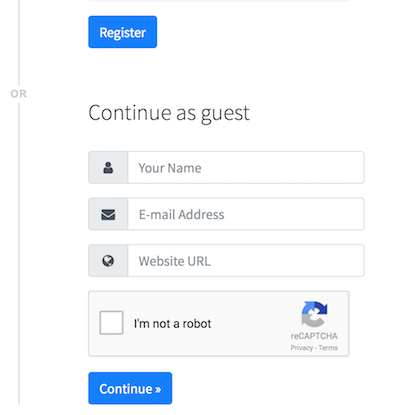
The guest user can then fill out the fields and click the Continue button to proceed to the add listing page.
Note: If you have disabled the custom login/registration form feature of Directories Pro, then it is not possible to collect any guest info and therefore all the guest post settings are ignored. In that case, guest posts will be created with the guest name set to "Guest" and all other information empty.